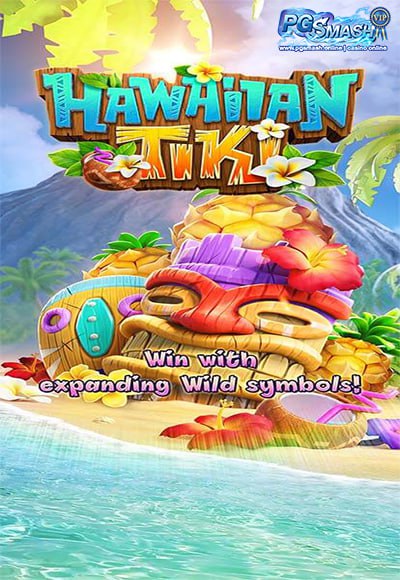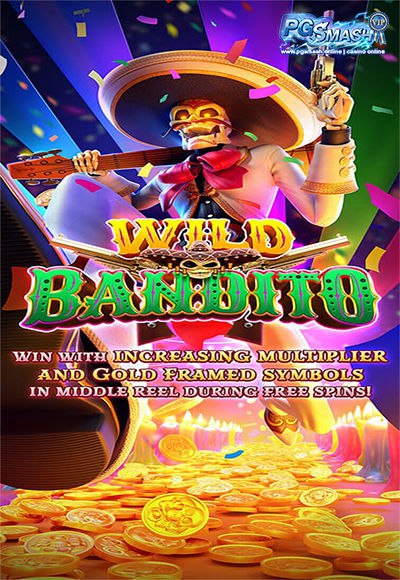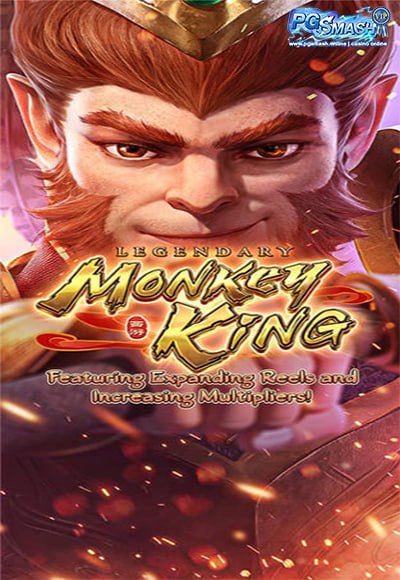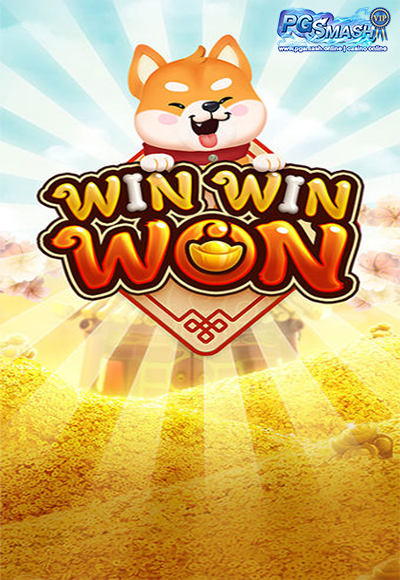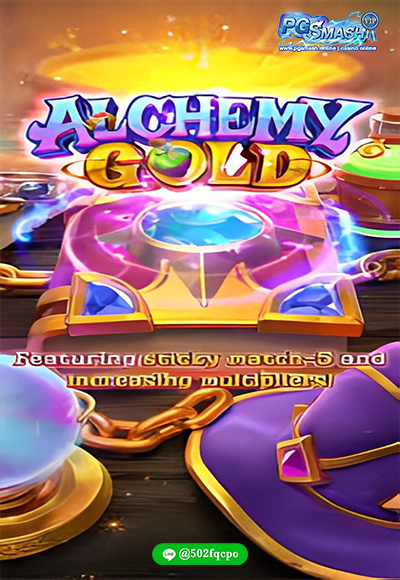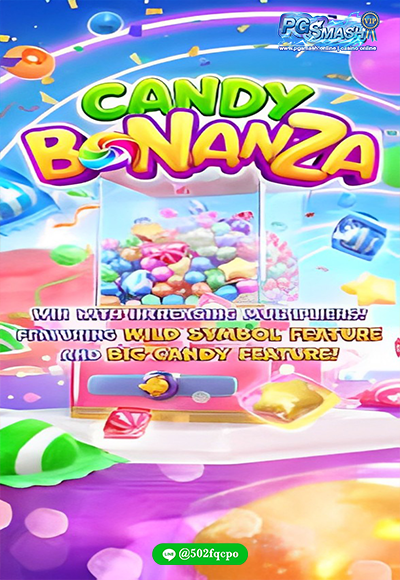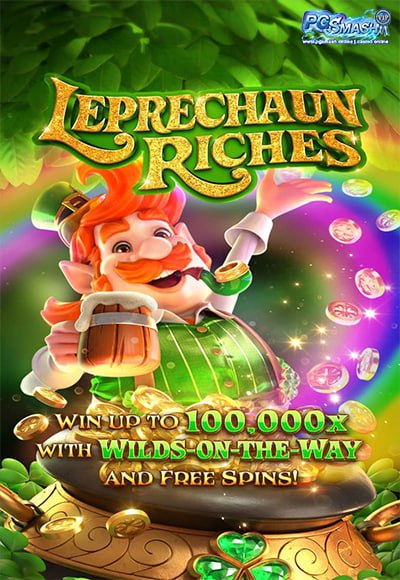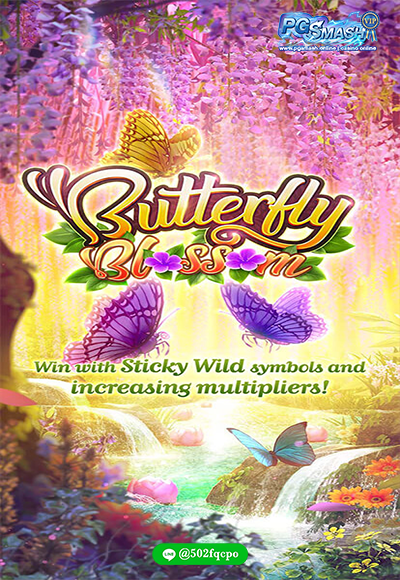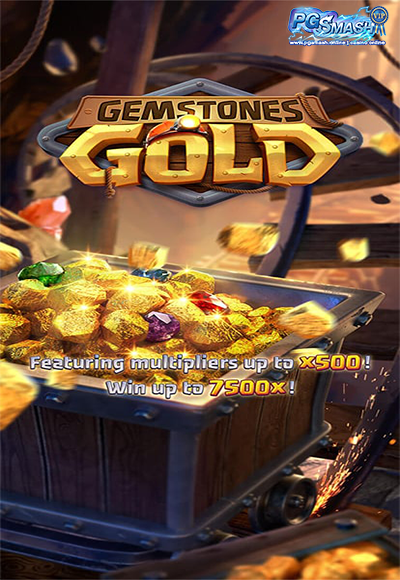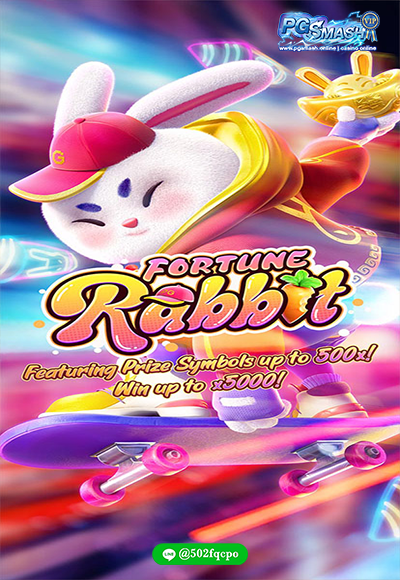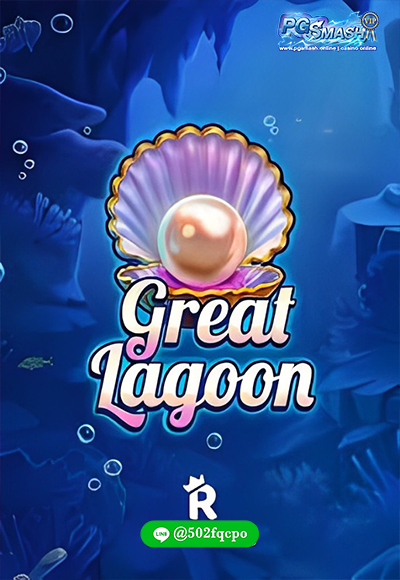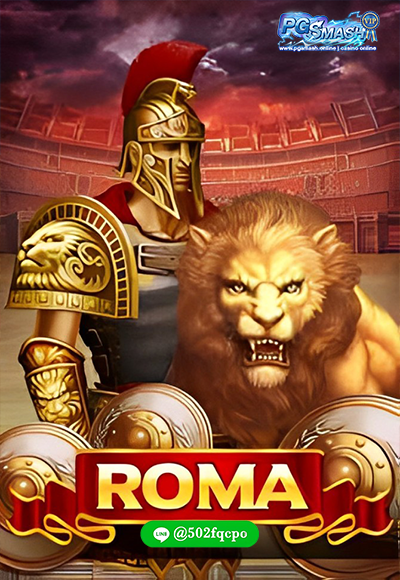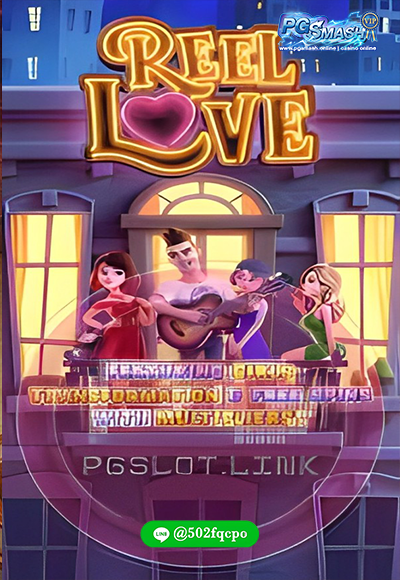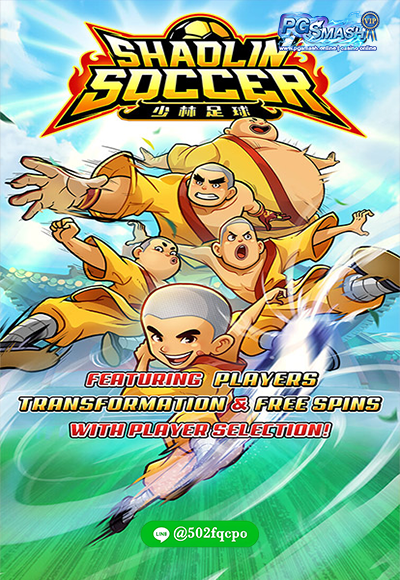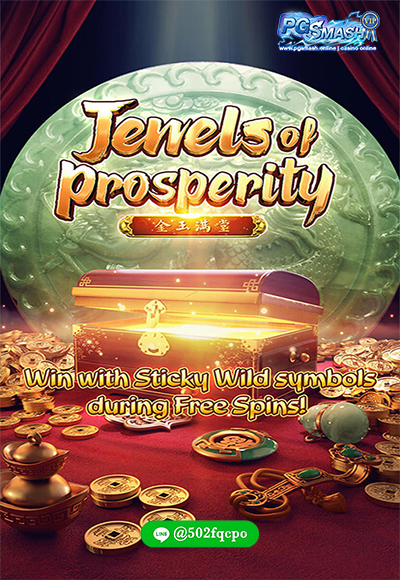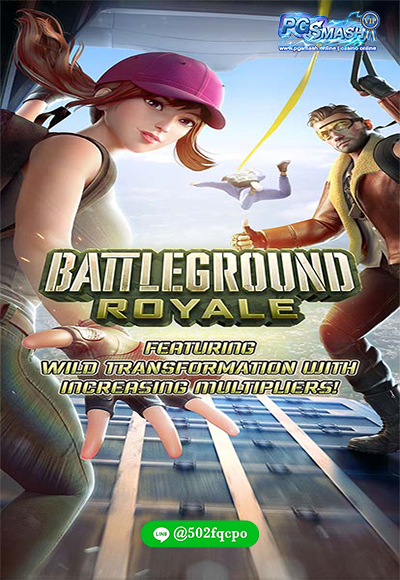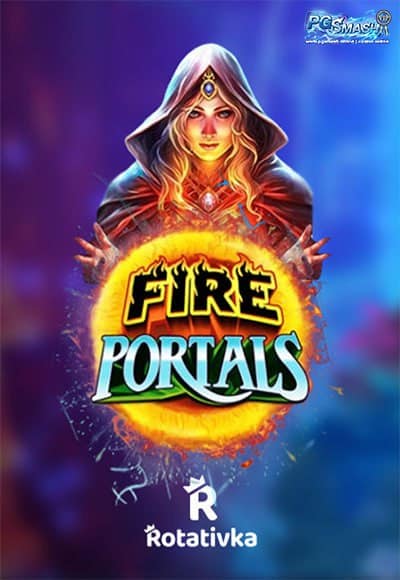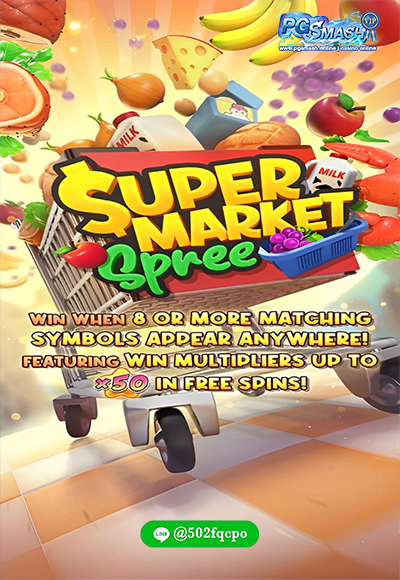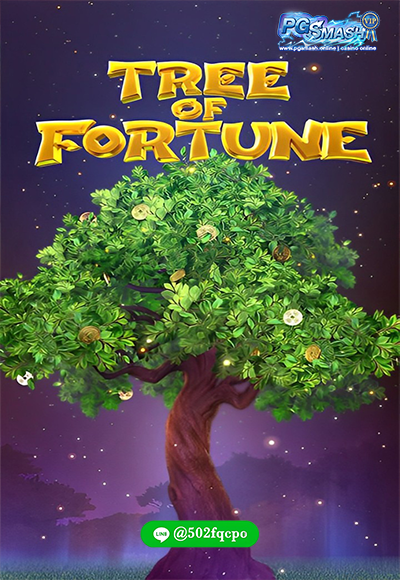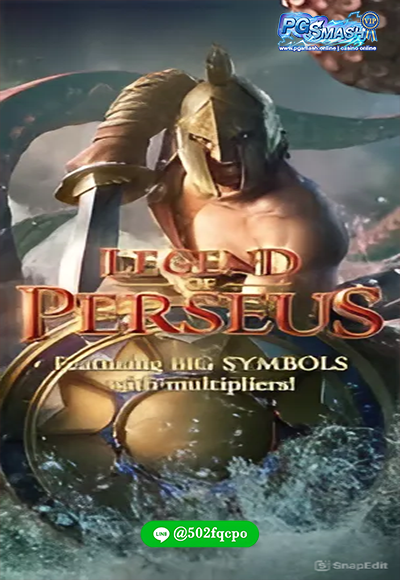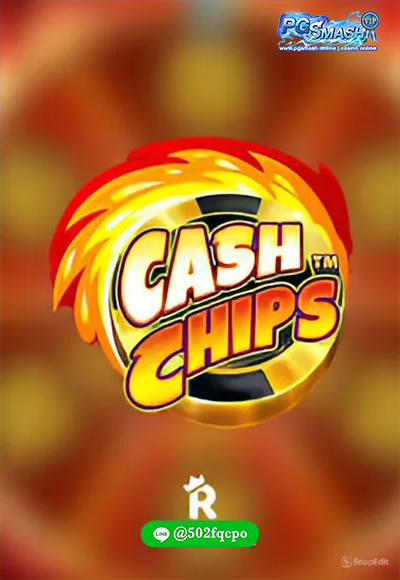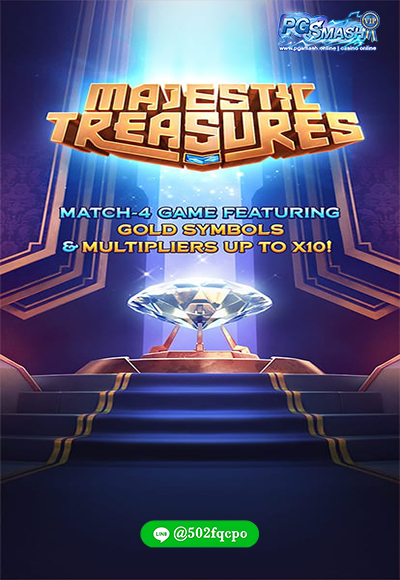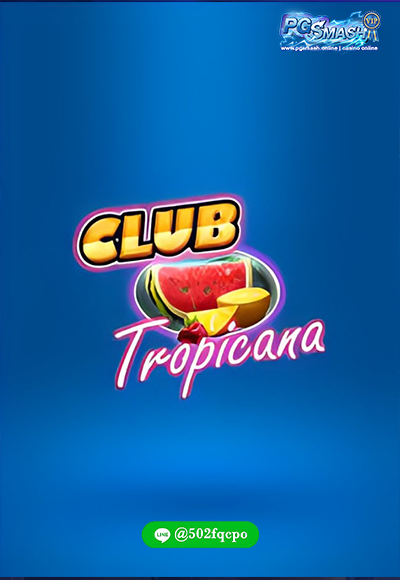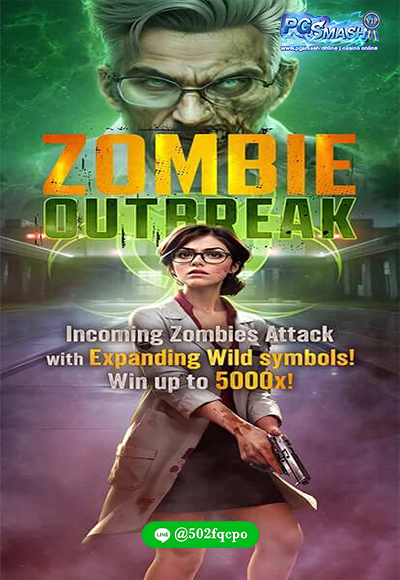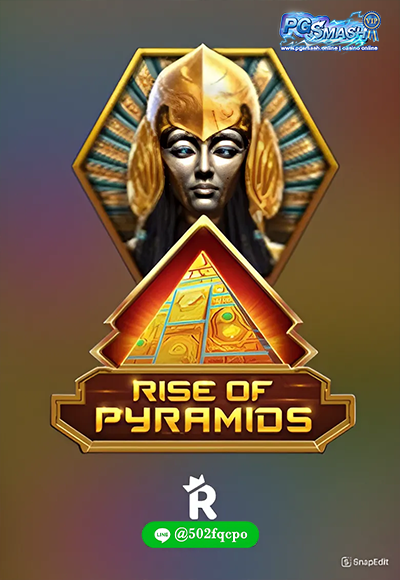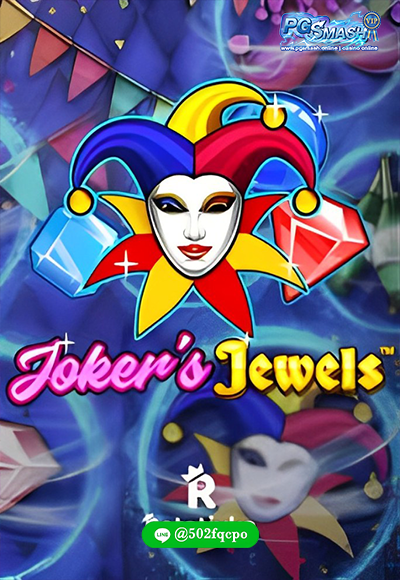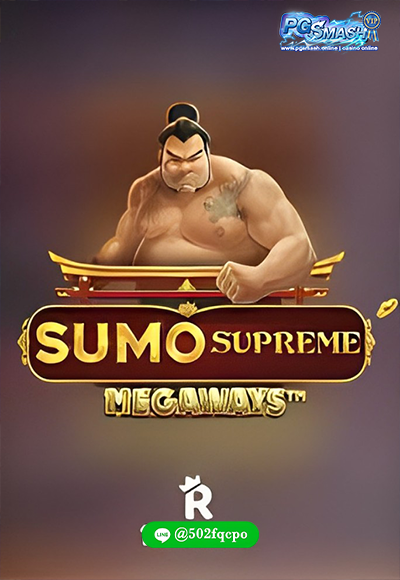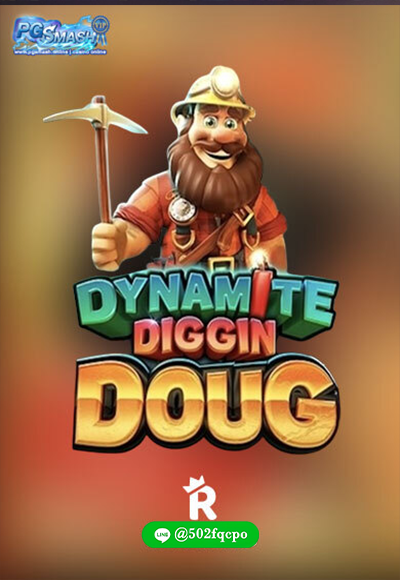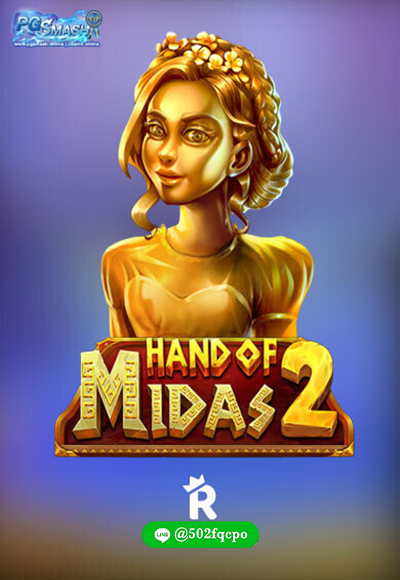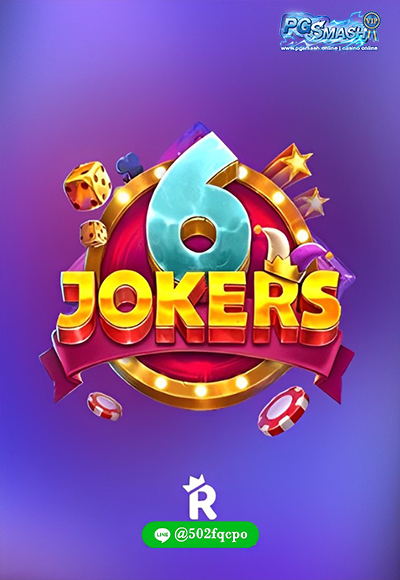เว็บออนไลน์ภาษาอังกฤษ PGSmash และ สล็อตแมชชีน Dia de los Muertos เป็นเกมสล็อตออนไลน์ที่มีแรงบันดาลใจมาจากเทศกาลสำคัญของชาวเม็กซิโกอย่าง วันแห่งความตาย ซึ่งเป็นวันที่ระลึกถึงผู้ล่วงลับ ด้วยกราฟิกที่สวยงาม สีสันสดใส และการออกแบบที่สะท้อนถึงวัฒนธรรมเม็กซิกัน ทำให้เกมนี้ได้รับความนิยมเป็นอย่างมากในหมู่ผู้เล่นที่ชื่นชอบความแปลกใหม่และสนุกสนาน จุดเด่นของเกมสล็อต Dia de los Muertos ธีมวัฒนธรรมเม็กซิกันและกราฟิกที่สดใส
เกมนี้ถ่ายทอดบรรยากาศของเทศกาลวันแห่งความตายได้อย่างสมบูรณ์แบบpgsmash ไม่ว่าจะเป็นสัญลักษณ์ที่แสดงถึงหัวกะโหลก, ดอกไม้, และองค์ประกอบที่สำคัญต่างๆ ของงานเทศกาล ทำให้เกมเต็มไปด้วยความสนุกและความเป็นเอกลักษณ์เฉพาะตัว ฟีเจอร์พิเศษและโบนัสที่หลากหลาย เกมสล็อต Dia de los Muertos มีฟีเจอร์พิเศษมากมาย เช่น การหมุนฟรี (Free Spins), ตัวคูณรางวัล (Multipliers) และรางวัลแจ็คพอตที่ผู้เล่นมีโอกาสชนะรางวัลใหญ่ได้ง่าย ทำให้เกมนี้น่าสนใจและน่าตื่นเต้นทุกครั้งที่หมุนวงล้อ
เสียงดนตรีและบรรยากาศที่มีชีวิตชีวา PGSmashดนตรีในเกมได้รับการออกแบบให้ตรงกับธีมของเทศกาลวันแห่งความตาย เป็นเสียงเพลงสไตล์เม็กซิกันที่มีจังหวะสนุกสนาน ช่วยเพิ่มความรู้สึกมีชีวิตชีวาและสร้างบรรยากาศที่สนุกสนานให้กับผู้เล่นการเล่นที่ง่ายและเข้าถึงได้ทุกคน Dia de los Muertos เป็นเกมที่เล่นง่าย ไม่ซับซ้อน ผู้เล่นไม่จำเป็นต้องมีประสบการณ์มากก็สามารถเข้าใจได้อย่างรวดเร็ว นอกจากนี้ยังมีตัวเลือกในการเล่นแบบไม่มีขั้นต่ำ ทำให้เหมาะสำหรับผู้เล่นทุกระดับ
เว็บออนไลน์ที่น่าเชื่อถือและปลอดภัย การเล่น Dia de los Muertos PGsmashผ่านเว็บออนไลน์ที่มีชื่อเสียง ช่วยให้มั่นใจได้ในเรื่องของความปลอดภัยในการทำธุรกรรม ทั้งการฝากและถอนเงินที่รวดเร็วและไม่มีขั้นต่ำ รวมถึงการบริการลูกค้าที่มีคุณภาพ สรุป Dia de los Muertos เป็นเกมสล็อตที่นำเสนอความสนุกสนานผ่านธีมวัฒนธรรมเม็กซิกันที่สดใสและเต็มไปด้วยความหมาย เกมนี้ไม่เพียงแต่น่าสนใจในแง่ของการออกแบบและกราฟิก แต่ยังมอบประสบการณ์การเล่นที่เต็มไปด้วยโอกาสในการชนะรางวัลใหญ่ ทำให้เป็นหนึ่งในเกมสล็อตที่ดีที่สุดบนเว็บออนไลน์

1. dia de los muertos เว็บออนไลน์ภาษาอังกฤษ best
Dia de los Muertos เป็นเกมสล็อตออนไลน์ที่นำเสนอธีมของเทศกาล PG Slot เว็บตรง PGSmashวันแห่งความตาย ของชาวเม็กซิโก ซึ่งเป็นหนึ่งในวันสำคัญของวัฒนธรรมเม็กซิกัน เกมนี้ได้รับการออกแบบมาอย่างงดงามและเต็มไปด้วยสีสันสดใส เพื่อให้ผู้เล่นได้รับประสบการณ์ที่ไม่เหมือนใคร PG Slot แจกจริง PGSmashนอกจากความสวยงามแล้ว ยังมีฟีเจอร์พิเศษที่น่าตื่นเต้น ทำให้เกมนี้เป็นหนึ่งในเกมสล็อตที่ดีที่สุดในเว็บออนไลน์ภาษาอังกฤษ เหตุผลที่ Dia de los Muertos เป็นหนึ่งในเกมสล็อตที่ดีที่สุด ธีมวัฒนธรรมเม็กซิกันที่น่าหลงใหล
เกมนี้ถ่ายทอดบรรยากาศของวันแห่งความตายได้อย่างมีชีวิตชีวา ด้วยกราฟิกที่สะท้อนถึงประเพณีและวัฒนธรรมของชาวเม็กซิกัน ไม่ว่าจะเป็นหัวกะโหลกที่ตกแต่งอย่างสวยงาม ดอกดาวเรืองที่ใช้ในงานพิธี และการออกแบบที่ละเอียดอ่อน ช่วยสร้างบรรยากาศที่น่าตื่นเต้นและสนุกสนาน โบนัสและฟีเจอร์พิเศษที่หลากหลาย Dia de los Muertos มาพร้อมกับฟีเจอร์พิเศษ เช่น ฟรีสปิน (Free Spins) และตัวคูณรางวัล (Multipliers) ซึ่งทำให้การเล่นเกมมีความท้าทายและเพิ่มโอกาสในการชนะรางวัลใหญ่ ผู้เล่นจะได้สัมผัสกับความสนุกและความตื่นเต้นในทุกการหมุน
เสียงเพลงและบรรยากาศที่เต็มไปด้วยชีวิตชีวา PG Slot เว็ปตรง PGSmash123ดนตรีในเกมเป็นสไตล์ดั้งเดิมของเม็กซิโก ช่วยสร้างบรรยากาศของงานเทศกาลและเพิ่มความสนุกในการเล่น ยิ่งไปกว่านั้น เสียงเอฟเฟกต์ต่างๆ ยังช่วยเพิ่มความตื่นเต้นเมื่อผู้เล่นชนะรางวัลPG Slot เว็บตรง PGSMASH789การเล่นที่ง่ายและสะดวกสบาย เกมนี้เหมาะสำหรับผู้เล่นทุกระดับ ตั้งแต่ผู้เริ่มต้นไปจนถึงผู้เล่นมืออาชีพ ด้วยกติกาที่เข้าใจง่าย และไม่มีข้อจำกัดในการวางเดิมพัน ทำให้ผู้เล่นสามารถปรับเปลี่ยนกลยุทธ์ได้อย่างยืดหยุ่น เว็บออนไลน์ภาษาอังกฤษที่น่าเชื่อถือ
Dia de los Muertos มักถูกนำเสนอในเว็บออนไลน์ที่มีความน่าเชื่อถือParis99 มีระบบการฝาก-ถอนที่รวดเร็วและปลอดภัย ผู้เล่นจึงสามารถเล่นเกมได้อย่างมั่นใจ โดยไม่ต้องกังวลเรื่องความปลอดภัย สรุป Dia de los Muertos เป็นเกมสล็อตที่มีการออกแบบที่สวยงามและเต็มไปด้วยความสนุกสนาน ไม่ว่าจะเป็นธีมวัฒนธรรมเม็กซิกันที่โดดเด่น ฟีเจอร์พิเศษที่หลากหลาย และโอกาสในการชนะรางวัลใหญ่ AMBINDO AMBINDOทำให้เกมนี้เป็นหนึ่งในเกมสล็อตที่ดีที่สุดบนเว็บออนไลน์ภาษาอังกฤษ

1.1 ธีมวัฒนธรรมเม็กซิกันที่น่าหลงใหล เพีย888ดูบอลสด ระบบหลังบ้านบริสุทธิ์ คาสิโนสด 168
ธีมวัฒนธรรมเม็กซิกันที่น่าหลงใหล ในเกม Dia de los MuertosKC9 เป็นจุดเด่นที่ทำให้เกมนี้มีเอกลักษณ์และโดดเด่นไม่เหมือนใคร ธีมของเกมได้รับแรงบันดาลใจจากเทศกาล วันแห่งความตาย ของชาวเม็กซิโก ซึ่งเป็นงานเฉลิมฉลองที่เต็มไปด้วยสีสันและความหมายทางวัฒนธรรม รายละเอียดของธีมวัฒนธรรมเม็กซิกันที่น่าหลงใหลในเกม สัญลักษณ์หัวกะโหลกที่สวยงาม หัวกะโหลก (หรือที่เรียกว่า Calaveras) 99CROWNเป็นสัญลักษณ์สำคัญของเทศกาล Dia de los Muertos ในเกมนี้ หัวกะโหลกถูกออกแบบให้มีความสวยงาม
มีการตกแต่งด้วยสีสันสดใสและลวดลายที่ละเอียดBK8 สะท้อนถึงความเคารพและการระลึกถึงผู้ล่วงลับอย่างมีชีวิตชีวา
ดอกดาวเรืองสีทอง (Marigold) ดอกดาวเรืองซึ่งเป็นดอกไม้ที่มีความหมายในเทศกาลนี้ SIAM.WINถูกใช้เป็นสัญลักษณ์อีกหนึ่งอย่างในเกม ดอกไม้สีทองที่สว่างไสวนี้เชื่อกันว่าช่วยนำทางวิญญาณให้กลับมาพบครอบครัวในโลกมนุษย์ ทำให้บรรยากาศในเกมมีความอบอุ่นและสดใส

1.2 การออกแบบกราฟิกที่สะท้อนถึงประเพณี
เกมนี้ใช้กราฟิกที่สื่อถึงความหลากหลายทางวัฒนธรรมของเม็กซิโก 188BETด้วยการผสมผสานสีสันที่สดใสและภาพลักษณ์ที่เกี่ยวข้องกับวันแห่งความตาย เช่น โครงกระดูกที่สวมใส่ชุดแฟนซี เครื่องดนตรี และการตกแต่งงานฉลอง ซึ่งทั้งหมดนี้ทำให้ผู้เล่นได้สัมผัสถึงเสน่ห์ของวัฒนธรรมเม็กซิกันอย่างแท้จริง บรรยากาศของงานเฉลิมฉลอง ธีมของ Dia de los Muertos ไม่ได้มุ่งเน้นไปที่ความเศร้าโศก แต่เป็นการเฉลิมฉลองชีวิตของผู้ล่วงลับด้วยเสียงเพลง การเต้นรำ และความสนุกสนาน ซึ่งเกมนี้ได้ถ่ายทอดบรรยากาศเหล่านั้นออกมาอย่างสมบูรณ์แบบLockdown168
สรุป ธีมวัฒนธรรมเม็กซิกันใน Dia de los Muertos W88ไม่เพียงแค่ดึงดูดผู้เล่นด้วยกราฟิกที่สวยงามและมีชีวิตชีวา แต่ยังช่วยให้ผู้เล่นได้สัมผัสถึงประเพณีและวัฒนธรรมอันลึกซึ้งของเม็กซิโก SLOTGAME6666ทำให้การเล่นเกมสล็อตนี้เป็นประสบการณ์ที่ทั้งสนุกและน่าประทับใจ
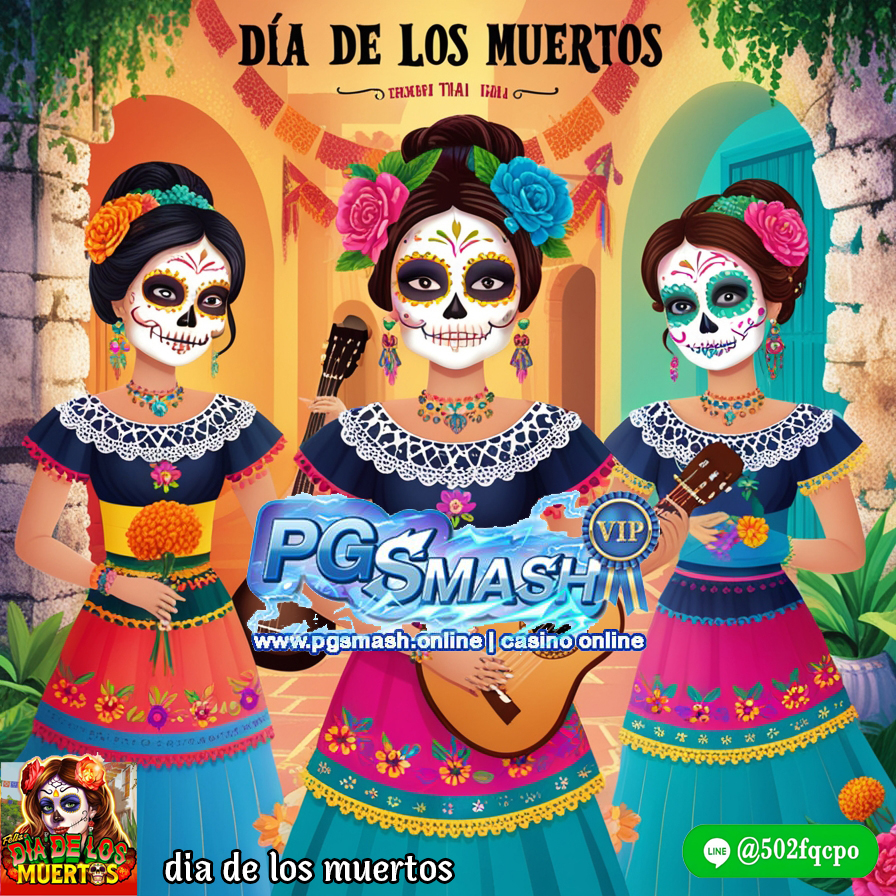
1.3 บรรยากาศของงานเฉลิมฉลอง
บรรยากาศของงานเฉลิมฉลอง ในเกม Dia de los Muertos 818KINGถูกถ่ายทอดออกมาอย่างมีชีวิตชีวาและสนุกสนาน สะท้อนถึงความสำคัญของเทศกาล วันแห่งความตาย ของชาวเม็กซิกัน ซึ่งเป็นวันที่ครอบครัวและเพื่อนฝูงจะรวมตัวกันเพื่อรำลึกถึงผู้ล่วงลับด้วยการจัดงานเฉลิมฉลองที่เต็มไปด้วยสีสันและเสียงดนตรี รายละเอียดของบรรยากาศงานเฉลิมฉลองในเกม สีสันสดใสและการตกแต่ง PLAY WSOPเกมนี้เต็มไปด้วยสีสันสดใสที่ชวนให้นึกถึงงานเฉลิมฉลองจริงในเทศกาล Dia de los Muertos ไม่ว่าจะเป็นการตกแต่งด้วยดอกดาวเรือง
หัวกะโหลกที่แต่งด้วยลวดลายที่ประณีต และโครงกระดูกที่เต้นรำอย่างร่าเริง m98ทุกอย่างในเกมนี้ถูกออกแบบมาให้สอดคล้องกับบรรยากาศของงานเทศกาลอย่างสมบูรณ์แบบ เสียงดนตรีพื้นบ้านที่สนุกสนาน ดนตรีเป็นส่วนสำคัญของการเฉลิมฉลองในเทศกาลนี้ ซึ่งในเกม Dia de los Muertos มีการใช้ดนตรีสไตล์เม็กซิกันที่มีจังหวะสนุกสนานและมีชีวิตชีวา ช่วยให้ผู้เล่นรู้สึกถึงความมีชีวิตชีวาของงานเฉลิมฉลองM98 ไม่ว่าจะเป็นเสียงกีต้าร์, มาราคัส หรือเสียงการเต้นรำที่เสริมบรรยากาศให้เต็มไปด้วยความครึกครื้น
1.4 การเฉลิมฉลองด้วยการเต้นรำ
หนึ่งในจุดเด่นของเทศกาลนี้คือการเต้นรำที่เต็มไปด้วยความสนุกสนานและความสุข slot99เกมได้นำเสนอตัวละครโครงกระดูกที่สวมใส่ชุดแฟนซีและเต้นรำอย่างมีชีวิตชีวา ทำให้ผู้เล่นรู้สึกถึงความรื่นเริงและความสนุกที่ไม่รู้จบ
การเฉลิมฉลองชีวิตและความทรงจำ แม้จะเป็นงานที่ระลึกถึงผู้ที่จากไปONE CASINO แต่บรรยากาศของ Dia de los Muertos กลับเต็มไปด้วยการเฉลิมฉลองชีวิตและความทรงจำที่งดงามของผู้ล่วงลับ เป็นการสร้างบรรยากาศที่ทั้งอบอุ่นและน่าสนุก ทำให้ผู้เล่นได้รับประสบการณ์ที่ทั้งเพลิดเพลินและเต็มไปด้วยความหมาย
สรุป บรรยากาศของงานเฉลิมฉลองในเกม Dia de los Muertosone ถูกสร้างขึ้นมาอย่างละเอียดอ่อนและมีชีวิตชีวา ด้วยการใช้สีสันที่สดใส ดนตรีที่ครึกครื้น และการเต้นรำที่สนุกสนาน pg smash 789ทำให้ผู้เล่นได้สัมผัสกับบรรยากาศที่เต็มไปด้วยความสุขและการเฉลิมฉลองชีวิตอย่างแท้จริง
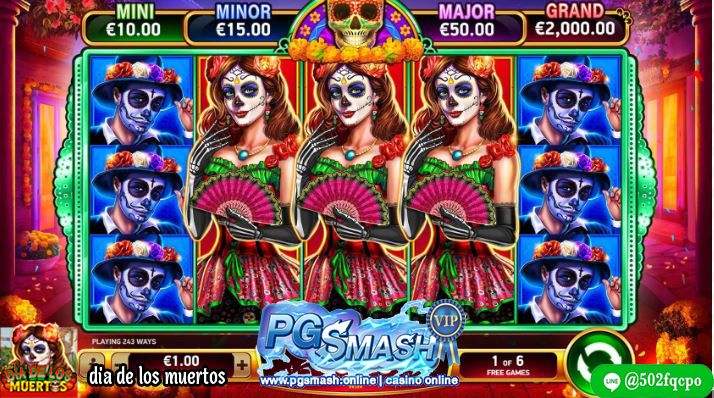
1.5 การเฉลิมฉลองชีวิตและความทรงจำ
การเฉลิมฉลองชีวิตและความทรงจำ ในเกม Dia de los Muertos Paris99ccสะท้อนถึงแก่นแท้ของเทศกาล วันแห่งความตาย ของชาวเม็กซิกัน ที่แม้จะเป็นการระลึกถึงผู้ล่วงลับ แต่ก็เต็มไปด้วยความสุขและการเฉลิมฉลองชีวิตในรูปแบบที่ไม่เหมือนใคร เกมนี้ถ่ายทอดความรู้สึกของการเฉลิมฉลองชีวิตและความทรงจำอันงดงามผ่านกราฟิก เสียงดนตรี และฟีเจอร์ต่างๆ ที่ทำให้ผู้เล่นได้ดื่มด่ำกับความหมายของเทศกาล KING DIAMONDรายละเอียดของการเฉลิมฉลองชีวิตและความทรงจำในเกม การระลึกถึงผู้ล่วงลับด้วยความรักและความเคารพ
เทศกาล Dia de los Muertos ค่ายเกมส์เกมยิงปลายอดนิยมเป็นช่วงเวลาที่ครอบครัวจะมารวมตัวกันเพื่อระลึกถึงผู้ที่จากไป ด้วยความรักและความเคารพ โดยในเกมนี้มีการใช้สัญลักษณ์เชิงสัญลักษณ์ เช่น หัวกะโหลกที่ถูกตกแต่งอย่างสวยงาม ซึ่งแสดงถึงการมองความตายเป็นส่วนหนึ่งของชีวิต และการเฉลิมฉลองความทรงจำที่ยังคงอยู่ สัญลักษณ์ที่เต็มไปด้วยความหมาย สัญลักษณ์ต่างๆ ในเกม เช่น ดอกดาวเรือง (Marigold) ทางเข้า Paris99.CASINOและโครงกระดูกที่แต่งกายแฟนซี เป็นสิ่งที่ชาวเม็กซิกันใช้ในเทศกาลนี้เพื่อเชื่อมโยงกับวิญญาณของผู้ล่วงลับ
สื่อถึงการเฉลิมฉลองชีวิตที่เคยมีอยู่ PGSMASH PG SLOT .ONLINEและการแสดงความรักที่ยังคงไม่เสื่อมคลายPGSmash789
1.6 เสียงเพลงและการเต้นรำที่เฉลิมฉลองชีวิต
ในเกม Dia de los Muertos pgsmash789pgslotเสียงดนตรีและการเต้นรำเป็นองค์ประกอบที่สำคัญของการเฉลิมฉลอง ผู้เล่นจะได้สัมผัสถึงจังหวะเพลงที่สนุกสนานและมีชีวิตชีวา เป็นการสื่อถึงการเฉลิมฉลองชีวิตอย่างเต็มที่ แม้จะเป็นการระลึกถึงผู้ที่จากไปแล้ว แต่ก็ไม่มีความเศร้า กลับเต็มไปด้วยความสุขและการยอมรับความเป็นไปของชีวิต การเฉลิมฉลองผ่านการเล่นเกม นอกจากเนื้อหาที่เต็มไปด้วยความหมายแล้ว การเล่นเกมนี้ยังเปรียบเสมือนการเฉลิมฉลองในทุกครั้งที่ผู้เล่นชนะหรือได้รับรางวัลใหญ่
เป็นการแสดงถึงความต่อเนื่องของชีวิตและการมองไปข้างหน้าด้วยความหวังและความ PG-Smash.Onlineสนุกสนาน สรุป Dia de los Muertos ถ่ายทอดการเฉลิมฉลองชีวิตและความทรงจำได้อย่างลงตัว เกมนี้ไม่ได้มองความตายด้วยความเศร้า แต่เน้นการเฉลิมฉลองชีวิตที่ยังคงอยู่ในความทรงจำ PGSMASH.ONLINEด้วยความรัก ความเคารพ และความสุข เกมนี้จึงเต็มไปด้วยความหมายที่ลึกซึ้งควบคู่กับการเล่นที่สนุกสนาน
2. Día de los Muertos A Celebration of Life and Memory
Día de los Muertos, or the Day of the Dead, is a vibrant and meaningful Mexican holiday that honors loved ones who have passed away. Far from being a somber occasion, this celebration is a joyous and colorful tribute to the cycle of life and death. Held annually on November 1st and 2nd, Día de los Muertos blends indigenous traditions with Catholic influences, creating a unique festival that celebrates the memory of ancestors with love, food, music, and vibrant altars.PG SMASH 789 PG SLOT
Origins of Día de los Muertos
The roots of Día de los Muertos can be traced back thousands of years to the pre-Hispanic civilizations of Mexico, including the Aztec, Maya, and other indigenous cultures. These cultures held a cyclical view of life and death, believing that death was not the end but a transition to a new phase of existence. The souls of the deceased were thought to journey to the afterlife, but they were never forgotten.
After the Spanish conquest in the 16th century, Catholic traditions were integrated into these indigenous practices, resulting in a fusion of beliefs that shaped the modern Día de los Muertos. The holiday coincides with All Saints’ Day (November 1) and All Souls’ Day (November 2) from the Catholic calendar, but the underlying spirit of the celebration remains deeply tied to pre-Columbian views of death as a natural part of life.PGSLOT.COM SMASH.COM
Altars and Offerings (Ofrendas)
At the heart of Día de los Muertos are the ofrendas, or altars, that families create to honor their deceased loved ones. These altars are both deeply personal and symbolic, reflecting the lives of those being remembered. Built in homes, cemeteries, or public spaces, ofrendas are decorated with photographs, candles, flowers, food, and other items that were meaningful to the deceased.kingdiamond888
One of the most iconic elements of these altars is the cempasúchil, or marigold flower. Known as the “flower of the dead,” its bright orange and yellow petals are believed to guide the spirits back to the world of the living. Incense, often in the form of copal, is burned to purify the area and attract the souls.
The offerings on the ofrendas typically include favorite foods and drinks of the departed, such as tamales, mole, and pan de muerto (bread of the dead), a sweet bread baked specifically for the occasion. These offerings are thought to nourish the spirits on their journey back to the world of the living, allowing them to enjoy the pleasures they had in life once more.PG SLOT
Skulls and Skeletons Symbols of Life and Death
One of the most recognizable symbols of Día de los Muertos is the calavera, or skull. Sugar skulls (calaveras de azúcar) are a common sight during the holiday, often intricately decorated with bright colors and placed on altars or given as gifts. These skulls represent the vitality of life and serve as a reminder that death is not something to be feared but embraced as part of the natural cycle.Paris777
Another iconic figure is La Catrina, a skeletal representation of a high-society woman, created by Mexican artist José Guadalupe Posada in the early 20th century. La Catrina has become a symbol of Día de los Muertos, embodying the idea that death comes for everyone, regardless of status or wealth. The elegant, yet skeletal, appearance of La Catrina underscores the holiday’s message that death is a part of life to be accepted with humor and grace.Paris77
Family Reunions Across the Veil
One of the most beautiful aspects of Día de los Muertos is the belief that the souls of the departed return to the world of the living to be reunited with their families. November 1, known as Día de los Inocentes or Día de los Angelitos, is dedicated to the spirits of children who have passed away, while November 2 is reserved for adults. During this time, families gather to share memories, stories, and meals in the company of their ancestors’ spirits.PGsmash
In many parts of Mexico, families will visit the graves of their loved ones, cleaning and decorating them with marigolds, candles, and offerings. It’s common to see entire cemeteries lit up with the glow of candles as families spend the night in the company of their departed relatives, sharing food, music, and laughter. This practice is not one of mourning, but of celebration—an acknowledgment that the dead continue to live on in the hearts of the living.
Cultural Expressions of Día de los Muertos
Beyond the intimate family gatherings, Día de los Muertos is celebrated with public parades, festivals, and artistic expressions throughout Mexico and in many parts of the world. In cities like Mexico City, grand parades feature dancers and participants dressed as skeletons, wearing elaborate makeup and costumes that honor La Catrina. The streets come alive with music, dance, and colorful decorations, creating a festive atmosphere that celebrates life and memory.
Traditional music, such as mariachi bands, plays a central role in the festivities, adding a lively energy to the celebrations. Families and communities often come together to share food and partake in cultural traditions that have been passed down through generations. The mix of solemn remembrance and joyful celebration is a hallmark of Día de los Muertos, reflecting the duality of life and death.
Pan de Muerto The Bread of the Dead
An essential part of the Día de los Muertos feast is pan de muerto, a special bread baked for the occasion. This round, sweet bread is typically flavored with orange blossom and topped with sugar, and it often features designs that resemble bones. The bread is not only a delicious treat but also holds symbolic meaning, representing the cycle of life and death. It is placed on the altar as an offering to the spirits, as well as shared among family members during the celebration.
The Global Influence of Día de los Muertos
While Día de los Muertos is deeply rooted in Mexican culture, its influence has spread far beyond the borders of Mexico. The holiday has gained international recognition, particularly in the United States, where Mexican and Latinx communities celebrate it with vibrant festivals, parades, and altars. In places like Los Angeles, San Francisco, and New York, Día de los Muertos events have become cultural landmarks, drawing people from all backgrounds to participate in this unique celebration of life and death.
The popularity of Día de los Muertos has also grown in part due to its portrayal in films, art, and media. Movies like Coco (2017) have introduced global audiences to the rich traditions of the holiday, highlighting its themes of family, memory, and the connection between the living and the dead. This cultural representation has helped to broaden the understanding and appreciation of Día de los Muertos, making it a beloved holiday across the world.
A Celebration of Life and Love
At its heart, Día de los Muertos is a celebration of love. It is a time to honor those who have passed, not with sadness but with joy, recognizing the lasting impact they had on the world. The holiday encourages us to remember that death is not an end but a continuation of the journey, and that the spirits of those we love are always with us, especially when we celebrate their lives.
The essence of Día de los Muertos lies in the belief that life and death are intertwined. It is a time to reflect on the fragility of life, the inevitability of death, and the beauty of memory. As families come together to build altars, share stories, and laugh in the company of their ancestors, Día de los Muertos reminds us of the importance of cherishing every moment and keeping the memory of our loved ones alive.
Through vibrant colors, lively music, and heartfelt offerings, Día de los Muertos continues to be a timeless celebration of life, memory, and the enduring bonds that unite the living and the dead
Origins of Día de los Muertos A Journey Through Time
Día de los Muertos, or the Day of the Dead, is one of Mexico’s most vibrant and meaningful cultural traditions. While it is celebrated today with joyful remembrance, colorful altars, and symbolic offerings, its origins span thousands of years, deeply rooted in the customs of ancient Mesoamerican civilizations. This holiday represents a blend of indigenous traditions and Spanish Catholic influences, forming a unique and powerful celebration of life, death, and the eternal connection between the two.
Pre-Hispanic Roots Honoring the Dead in Ancient Mexico
The origins of Día de los Muertos can be traced back over 3,000 years to the indigenous peoples of Mexico, including the Aztec, Maya, Toltec, and other ancient civilizations. These cultures believed that death was not an end, but rather a continuation of the soul’s journey. Death was a natural and important part of the cycle of life, and the dead were believed to live on in the afterlife, maintaining a strong connection to the living.
For the Aztecs, the afterlife was a complex concept. The fate of the deceased was not determined by how they lived, but by the manner in which they died. Those who perished in battle, childbirth, or through sacrifices were thought to go directly to a paradise, while others would undergo a challenging journey to Mictlan, the underworld. The souls that reached Mictlan were eventually able to rest in peace.
To honor the dead and ensure their safe passage to the afterlife, the Aztecs and other indigenous groups held elaborate rituals and ceremonies. These rites were not mournful, but rather celebratory. They believed that their deceased ancestors would return to the world of the living for brief visits during certain times of the year. Offerings of food, drinks, and personal possessions were made to nourish and support the spirits on their journey.
One of the key figures in Aztec beliefs about death was the goddess Mictecacihuatl, known as the “Lady of the Dead.” She ruled over the afterlife and presided over the ancient festival that honored the dead, which was held in the ninth month of the Aztec calendar (approximately August). This festival lasted an entire month and was dedicated to deceased children and adults, reflecting the deep respect and reverence for the dead in Mesoamerican cultures.
Spanish Conquest and Catholic Influence
The arrival of the Spanish in the 16th century marked a significant turning point in the history of Día de los Muertos. With the conquest of Mexico by Hernán Cortés and the subsequent spread of Catholicism, the Spanish sought to replace indigenous beliefs with Christian teachings. They introduced holidays such as All Saints’ Day (November 1) and All Souls’ Day (November 2), which were intended to honor saints and pray for the souls of the departed.
Rather than erasing indigenous customs, however, the Spanish colonizers found that many aspects of Mesoamerican death rituals were too deeply ingrained in the local culture to be easily eliminated. As a result, the indigenous peoples of Mexico began to blend their ancient traditions with Catholic practices, creating a syncretic festival that honored both Christian saints and their ancestors.
This fusion of cultures gave rise to the modern Día de los Muertos, celebrated on November 1 and 2. November 1 became known as Día de los Inocentes (Day of the Innocents), honoring children who had passed away, while November 2 was reserved for adults. The indigenous practices of offering food and gifts to the dead persisted, but they were now incorporated into Catholic rituals, such as prayers and masses for the souls of the deceased.
Symbols and Traditions A Cultural Blend
The evolution of Día de los Muertos over centuries has resulted in a rich tapestry of symbols and traditions that reflect both indigenous and Catholic influences. Central to the celebration are the ofrendas, or altars, that families create to welcome the souls of their loved ones back to the world of the living. These altars are adorned with photographs, candles, flowers, food, and personal items that were cherished by the deceased.
The marigold flower, or cempasúchil, plays a prominent role in these altars. Known as the “flower of the dead,” its bright orange and yellow petals are believed to guide the spirits back to the world of the living with their vibrant color and strong scent. This flower, along with incense, helps create an inviting environment for the spirits to visit.
Other iconic elements of Día de los Muertos include sugar skulls, or calaveras de azúcar, which are often intricately decorated and placed on the altars. These skulls represent the cycle of life and death and are sometimes personalized with the names of the deceased. The skeleton, or calaca, is also a common motif, symbolizing the idea that death is a part of life and should not be feared. Skeleton figures are often depicted in lively, humorous poses, reflecting the celebratory nature of the holiday.
The practice of visiting cemeteries to clean and decorate graves with flowers, candles, and offerings is another tradition that has ancient roots. Families gather at the gravesites of their loved ones, sharing stories, meals, and music in a festive atmosphere that contrasts with the somber tone of many Western funerals. This practice emphasizes the idea that the dead are still part of the family and that their memory should be celebrated, not mourned.
Día de los Muertos in Modern Times
While Día de los Muertos remains a deeply Mexican tradition, it has gained international recognition in recent decades, particularly in the United States, where it is celebrated by Mexican and Latinx communities. The holiday has become a symbol of cultural identity and pride, with public festivals, parades, and altars honoring the dead in cities across the country. Schools, museums, and cultural institutions often hold events to teach people about the history and significance of the holiday.
In Mexico, Día de los Muertos continues to be celebrated with great fervor. The city of Oaxaca, in particular, is renowned for its elaborate altars, processions, and public displays of art and culture. Families spend weeks preparing for the holiday, gathering the materials needed to create their ofrendas and planning meals and gatherings to welcome the spirits of their ancestors.
The Enduring Legacy of Día de los Muertos
Día de los Muertos stands as a testament to the resilience of indigenous cultures and their ability to adapt and thrive in the face of colonization and change. Despite the imposition of Catholicism by Spanish colonizers, the core beliefs and practices of honoring the dead have endured for millennia, passed down through generations.
The holiday’s blend of indigenous and Catholic elements reflects the complex history of Mexico and the deep connections between the living and the dead in Mexican culture. At its heart, Día de los Muertos is a celebration of memory, family, and the enduring bonds of love that transcend death.
Today, Día de los Muertos serves as a reminder of the importance of remembering and honoring those who have passed on, not with sorrow, but with joy and reverence. The vibrant colors, lively music, and heartfelt offerings that define the holiday all speak to the idea that death is not the end, but simply another step in the eternal journey of the soul.
Cultural Expressions of Día de los Muertos A Tapestry of Tradition and Art
Día de los Muertos, or the Day of the Dead, is a profound cultural expression that transcends death, symbolizing the eternal connection between the living and the deceased. It is celebrated with color, creativity, and deep emotional resonance throughout Mexico and increasingly around the world. The holiday’s rich tapestry of traditions reflects a blend of indigenous beliefs and Spanish Catholic influence, resulting in a vibrant, joyful, and deeply spiritual event.
These cultural expressions are manifested through art, music, food, rituals, and storytelling, making Día de los Muertos not only a day of remembrance but also a celebration of life. The beauty of this holiday lies in its ability to unite communities and families, transcending generations as it preserves ancient customs in contemporary forms.
Ofrendas Honoring Loved Ones
The ofrenda (altar) is one of the most iconic expressions of Día de los Muertos. Families create elaborate altars in their homes or at gravesites to welcome the spirits of their departed loved ones. Each ofrenda is unique, tailored to honor specific ancestors, and filled with offerings that reflect the personality and preferences of the deceased. These altars serve as both a physical and spiritual bridge between the living and the dead, allowing families to maintain their connection with their ancestors.
Typical elements of an ofrenda include
Photographs of the deceased These serve as a focal point, reminding the family of their loved ones.
Candles Representing the light that guides the spirits back to the world of the living.
Marigold flowers (cempasúchil) Known as the “flowers of the dead,” their bright orange and yellow petals are believed to attract spirits with their vivid colors and fragrance.
Sugar skulls (calaveras de azúcar) Decorated with intricate designs, sugar skulls symbolize the sweetness of life and the presence of death.
Pan de muerto (bread of the dead) A special bread baked for the occasion, symbolizing the circle of life
and death.
Food and drinks Offerings of the deceased’s favorite foods, beverages, and treats are laid out as sustenance for their journey back to the afterlife.
Personal items Mementos, such as toys for deceased children or cigars for adults, reflect the personality and tastes of the departed

